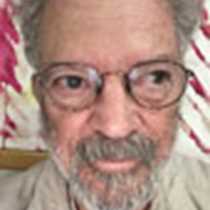The Antarctic Peninsula
Cliffs of columnar basalt break the sea into a white foam to be scattered by a fresh breeze and everywhere else there is ice and snow. Our first sighting of land since leaving South America two days ago was quite dramatic indeed. By lunchtime we were approaching Aitcho Island within the South Shetland Islands, an elongate but tightly packed group of islands laying parallel to the Antarctic Peninsula, almost like a shadow or a reflection on rippling water. We aimed for a narrow passage, the English Strait, and through it we were escorted by flocks of porpoising Chinstrap Penguins. Porpoising? Why, that would be swimming or in the case of a penguin, ‘flying’ underwater: fun until you need to breathe, so leap out of the water, breathe, then back under again to ‘fly’ some more. And so they did, thousands of penguins heading to and from their rookery at Aitcho Island where we made our first landing of the voyage. I helped; I drove a Zodiac, but a landing was not my ambition, rather I wanted to address a child’s question, “What lives at the bottom of the sea?” And so we did: Lisa and I, Lisa Trotter, the Assistant Expedition Leader. We launched our remotely operated vehicle from a Zodiac and ‘flew’ it to a depth of almost 500 feet, to the bottom of the sea in these parts. And what did we see? A completely different world, packed with life in strange colors and bizarre shapes. We took pictures and video to share with everyone on the ship. Here is a single frame from the video showing a juvenile fish, a blackfin icefish. But what’s so strange about this creature? Well, it has a funny dog-like face that accommodates a relatively large mouth and it has its tail curled so the tip is almost in its eye. Oh, did I mention that its blood is white? Hey, that’s why it’s called an icefish. Icefish have essentially no hemoglobin, no red blood cells, but they do just fine and wiggle pretty well too! Yes, there is more to that story and it is just one of the new things we are learning right now.
Cliffs of columnar basalt break the sea into a white foam to be scattered by a fresh breeze and everywhere else there is ice and snow. Our first sighting of land since leaving South America two days ago was quite dramatic indeed. By lunchtime we were approaching Aitcho Island within the South Shetland Islands, an elongate but tightly packed group of islands laying parallel to the Antarctic Peninsula, almost like a shadow or a reflection on rippling water. We aimed for a narrow passage, the English Strait, and through it we were escorted by flocks of porpoising Chinstrap Penguins. Porpoising? Why, that would be swimming or in the case of a penguin, ‘flying’ underwater: fun until you need to breathe, so leap out of the water, breathe, then back under again to ‘fly’ some more. And so they did, thousands of penguins heading to and from their rookery at Aitcho Island where we made our first landing of the voyage. I helped; I drove a Zodiac, but a landing was not my ambition, rather I wanted to address a child’s question, “What lives at the bottom of the sea?” And so we did: Lisa and I, Lisa Trotter, the Assistant Expedition Leader. We launched our remotely operated vehicle from a Zodiac and ‘flew’ it to a depth of almost 500 feet, to the bottom of the sea in these parts. And what did we see? A completely different world, packed with life in strange colors and bizarre shapes. We took pictures and video to share with everyone on the ship. Here is a single frame from the video showing a juvenile fish, a blackfin icefish. But what’s so strange about this creature? Well, it has a funny dog-like face that accommodates a relatively large mouth and it has its tail curled so the tip is almost in its eye. Oh, did I mention that its blood is white? Hey, that’s why it’s called an icefish. Icefish have essentially no hemoglobin, no red blood cells, but they do just fine and wiggle pretty well too! Yes, there is more to that story and it is just one of the new things we are learning right now.




